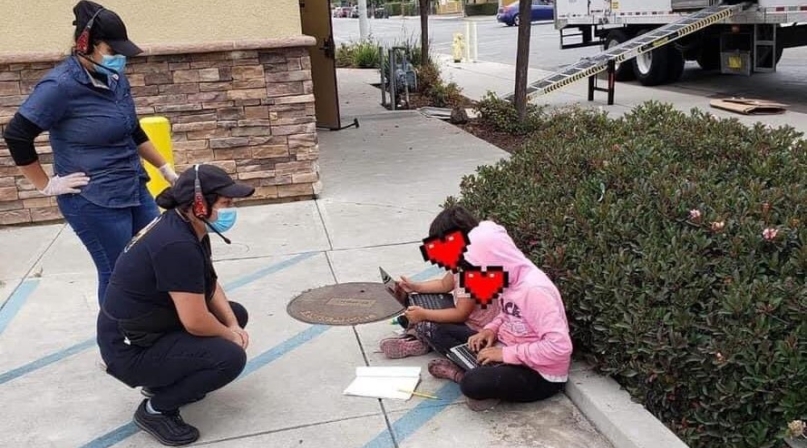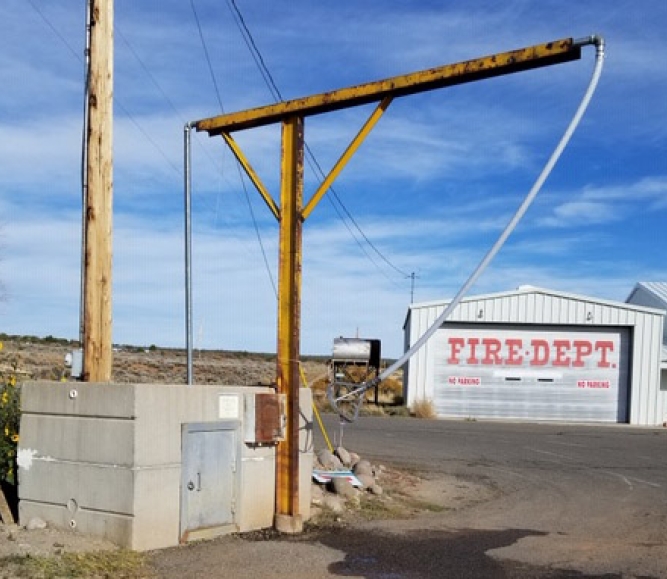California pushes middle-mile expansion

The picture was worth $6.5 billion.
A pair of children perched outside of an East Salinas, Calif. Taco Bell, working on laptops siphoning the restaurant’s Wi-Fi signal so they could do their remote schoolwork in 2020. A Monterey County employee took the photo and sent it to Supervisor Luis Alejo, who tweeted it to a surprising response.
“We must do better and solve this digital divide once and for all for all California students,” he wrote.
That viral photo became a rallying cry that ended up driving $6.5 broadband expansion legislation that passed in 2021, with the state Assembly still reeling from the COVID-19 pandemic and the digital divide it illustrated.
“The image of those two little girls was so heartbreaking, but it showed our nation what so many of our kids are going through all across California and our country,” Alejo said. “It inspired state leaders to take action and that’s when I became engaged.”
Middle Mile can be a matter of life and depth
Now two years later, Alejo is one of two county supervisors serving on the state’s broadband advisory committee, helping to give local input into Senate Bill 156’s $3.8 billion effort to bring access across the “middle mile,” between existing high speed internet infrastructure and distant users. Another $2 billion will help fund local “last mile” infrastructure, with $750 million for a loan loss reserve fund to help local entities secure financing for broadband infrastructure. Much of the funding from SB 156 came from the American Rescue Plan, with additional money from California’s general fund and the Bipartisan Infrastructure Act.
Alejo sees himself and Del Norte County Supervisor Valerie Starkey as conduits to bring staff county recommendations and reports to the state department of technology team charged with implementing the bill, with a goal of achieving digital equity.
“I feel the state is responsive to that participation,” he said. “Lifting up those voices is a critical part of this process.
“I think the issues come in from our local community voices, wanting to participate in these maps and give feedback but also to specifically address where the gaps are happening, where communities who felt like they were falling through the cracks or were not being prioritized as they should be.
The buildout is “very bold and ambitious, but the commitment is there to do this right and to make broadband for all a reality in California,” Alejo said.
But reality is a dynamic concept, both as a dream and a wakeup call, and it is now changing the fortunes of the idealists who set the goals. Cost increases over the last two years have meant that the budget for the planned 10,000 miles of middle-mile infrastructure now only funds 8,300 miles. California Gov. Gavin Newsom (D) has pledged to put the difference in his state budget proposal in January 2024, but in the meantime, plans remain in flux, according to Tracy Rhine, a senior policy advocate with the Rural County Representatives of California. Rhine noted that the state’s 18 middle-mile plans have changed four times since July 2023, including the potential that the state would build projects until it ran out of money and then come back later to finish the job. She said those changes are often done without soliciting input from affected localities, and often don’t include adequate notification.
“I think that what has gone wrong with the middle-mile process in particular is that there is a lack of oversight and transparency with the spending of nearly $4 billion,” she said. “We have a really big state geographically, we have to get across rural areas, but we also have ‘digital donuts’ in urban areas, and affordability issues everywhere. They’re different problems that need different solutions.”
The problem that concerns Rhine is that while counties are trying to line up their “last mile” infrastructure, the middle mile they are relying on may not end up happening the way they were told.
“I looked at the maps of Imperial County and see the change from the last iteration — the middle mile used to run north to south in the county. Now it runs east to west,” she said, as an example. “Communities can end up stranded.”
“One of the projects that we are working on in Monterey County is in jeopardy right now because of the changes that they’ve made to the middle mile without any consultation with the folks who are building ‘last mile.’”
Built for this moment
The business case for private internet service providers extending broadband to sparsely populated areas is a tough sell. That’s why the SB 156-inspired state-owned middle-mile program aims to meet so many Californians’ needs as a service, not a business.
“What the state did in 2021 was really a paradigm shift,” Rhine said. “Unserved areas hadn’t been served because it didn’t have an adequate rate of return right on investment. Why are we expecting businesses to act like charities?”
“The state is doing things differently, not just giving grants to incumbent internet service providers,” she noted.
SB 156’s implementation includes a variety of measures: Construction of new fiber, acquiring leases on existing fiber from private companies and a public-private partnership to build out capacity in Los Angeles County.
Alejo is optimistic about the positive effects adding additional service providers can have for families who have been reliant on a monopoly.
“We will create competition,” he said. “There are millions of Californians who only have one provider, and they don’t have any choice. The cost of living is high enough, but competition is better for consumers, because it addresses affordability.”
Granular work
Within Monterey County, Alejo is excited about what expanded broadband access could mean for farm workers and their families.
“We’re making sure those small farmer communities get access,” he said. “That means up to 500 farm workers will be connected.”
On top of individual residents’ fortunes, enhanced broadband access could be a boon for the Monterey County Salinas Valley agricultural sector, which could take greater advantage of precision farming made possible by GPS-driven equipment and drones, all of which would benefit from better internet access. But the focus, Alejo said, will be on expanding access to individuals.
The county toyed with forming a joint powers authority solely focused on broadband before deferring to just the southern part of the county.
“That was a little bit too big,” Alejo said.
The county has worked with the Public Utilities Commission to provide free internet access to San Ardo, a small farming community, and will prioritize expanding access in the four cities furthest south in the county.
“With that laser focus, we can ensure that all those disadvantaged communities are connected, whether it’s through the middle mile or eventually with last-mile funding.”
Related News

County Countdown – Dec. 1, 2025
Every other week, NACo's County Countdown reviews top federal policy advocacy items with an eye towards counties and the intergovernmental partnership.

U.S. House Passes Reauthorization Bill for the State and Local Cybersecurity Grant Program
On November 17, the U.S. House passed a reauthorization bill for the State and Local Cybersecurity Grant Program (SLCGP).
Rural leaders pitch county capacity building
Counties are making the best of another year without a farm bill, using that time to articulate how Congress can better equip them for success. Their message is already coalescing around ways government policy can simplify federal-local cooperation and address capacity limitations.
County News
‘Middle mile’ funding prospects vary for rural counties

